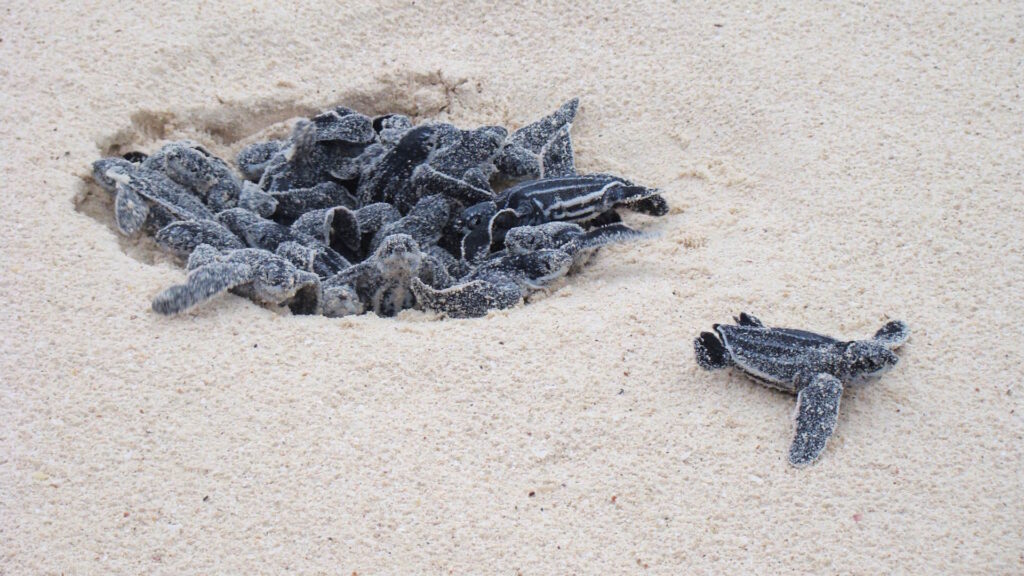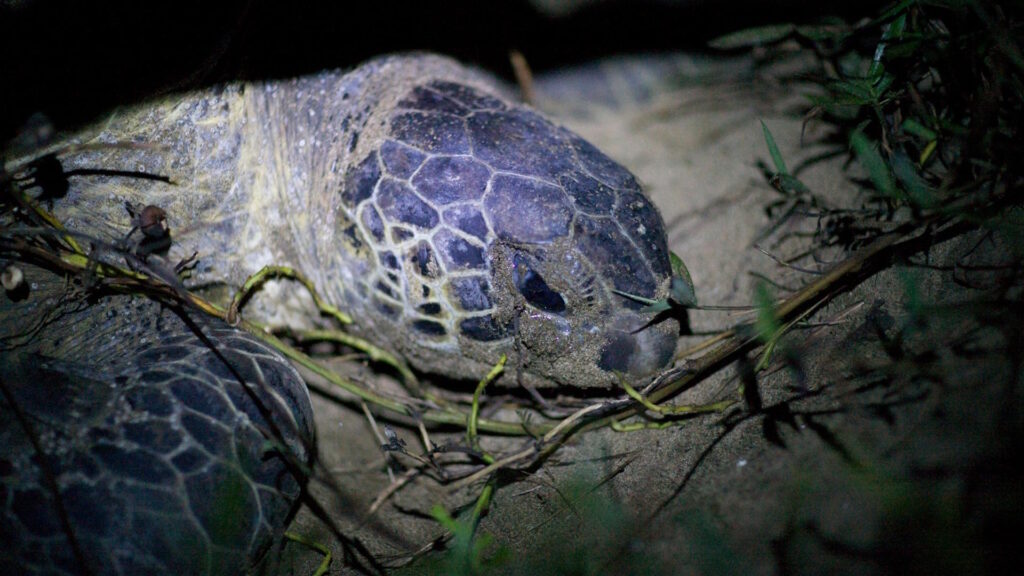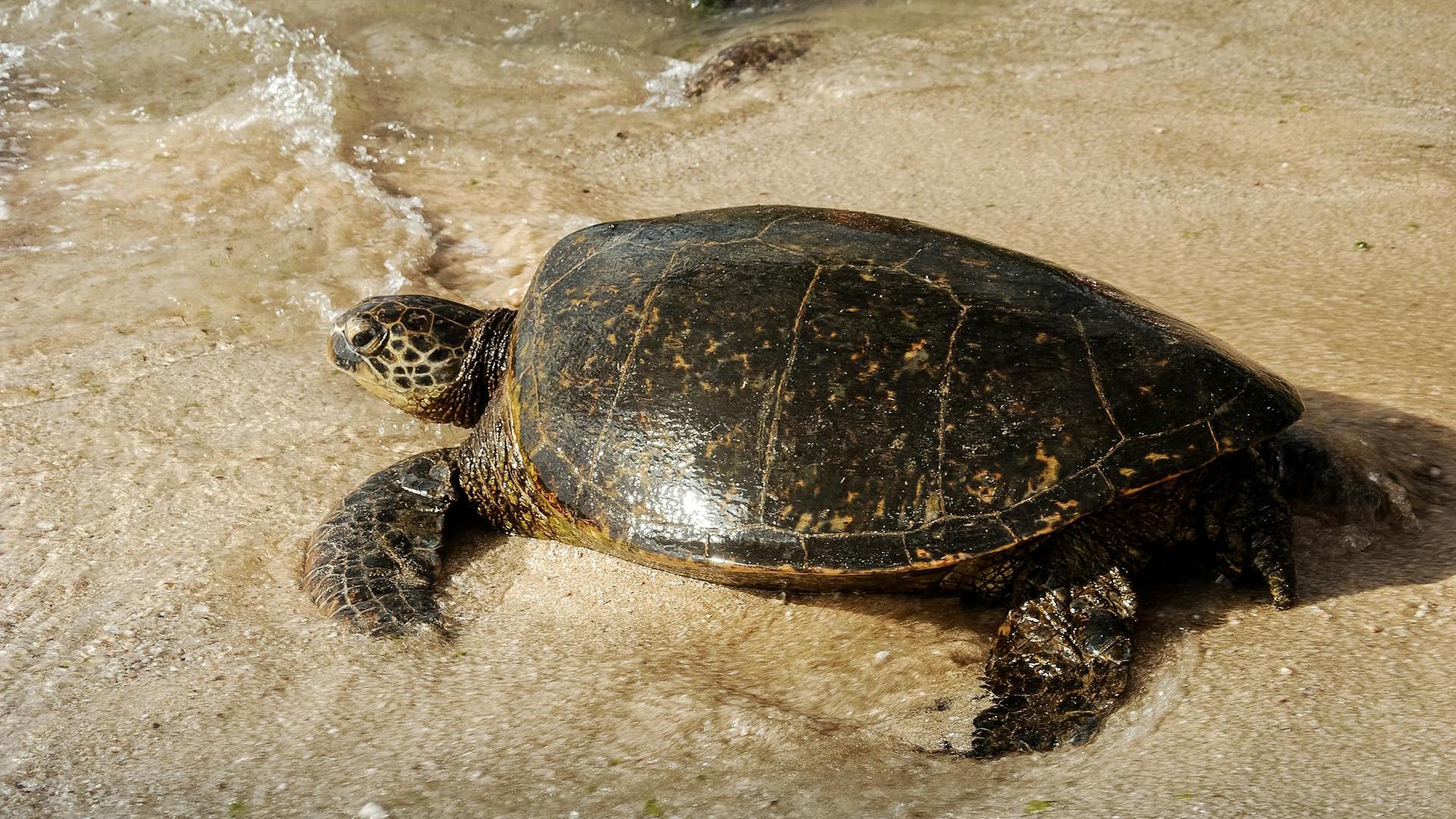In the mysterious world beneath the sand, an extraordinary conversation takes place between mother and child—one that science has only recently begun to understand. The seemingly silent nests of certain turtle species actually buzz with pre-birth communication, challenging our understanding of reptilian parenting and cognitive development. This remarkable phenomenon occurs primarily in the embryonic stage, when turtle eggs are still buried beneath the warm sands of beaches around the world. As these tiny beings develop within their shells, their mothers employ sophisticated communication methods that influence their behavior, development, and even survival after hatching. This fascinating discovery reveals that the parent-offspring bond in turtles extends far beyond what was previously thought possible, beginning long before the hatchlings ever break through their shells.
The Discovery of Prenatal Communication

Scientists first documented embryonic communication in turtles during studies of the giant South American river turtle (Podocnemis expansa) in the Amazon basin. Researchers noticed unusual vocalizations coming from nests that were still weeks away from hatching, prompting closer investigation with specialized audio equipment. What they discovered was astonishing: embryos within their eggs were producing low-frequency sounds that appeared to be coordinated across the nest. Further research revealed that these sounds weren’t random but seemed to serve specific purposes related to group synchronization and development. This groundbreaking discovery opened an entirely new field of study in reptilian behavior and challenged long-held assumptions about the cognitive capabilities of turtles before hatching.
Maternal Sound Signals and Their Impact

Female turtles have been observed producing distinctive vocalizations when near their nests, creating sound patterns that penetrate the sand and reach the developing eggs. These maternal calls typically occur during specific times in the incubation period, particularly as the embryos reach developmental stages where their auditory systems become functional. Research has shown that embryos react to these sounds by altering their heart rates and movement patterns within the egg, suggesting a physiological response to maternal communication. In species like the Arrau turtle, mothers have been documented making specific sounds that appear to influence the timing of hatching, essentially “calling” their young to emerge when environmental conditions are optimal for survival.
The Science Behind Egg-to-Egg Communication

Perhaps even more remarkable than mother-to-egg communication is the ability of turtle embryos to communicate with each other while still in their shells. Developing turtles produce vibrations and sounds that transmit through their eggshells and the surrounding nest medium to neighboring eggs. These signals appear to serve a synchronization function, helping ensure that hatchlings within the same nest emerge together, thus increasing their collective chances of survival. The mechanism involves specialized cells and tissues that develop early in embryonic growth, allowing the detection and production of specific vibrational frequencies. Scientists have measured these vibrations using sensitive accelerometers and found patterns that suggest intentional signaling rather than mere byproducts of development.
Evolutionary Advantages of Prenatal Communication

From an evolutionary perspective, the ability of turtles to communicate before hatching offers several significant advantages for species survival. Coordinated hatching allows larger groups of hatchlings to emerge simultaneously, overwhelming potential predators through sheer numbers and increasing the chances that some will reach the safety of water. Communication between mother and unhatched young may also allow for adaptive timing of hatching based on environmental conditions, such as predator presence or optimal tide conditions. Some researchers theorize that this sophisticated communication system evolved over millions of years, particularly in species that lack post-hatching parental care, as an alternative strategy to ensure offspring survival. The energy investment in developing these communication capabilities suggests their critical importance to species that have maintained these traits through evolutionary time.
Methods of Sound Production in Embryonic Turtles

The physiological mechanisms that allow unhatched turtles to produce sounds are remarkably sophisticated for creatures still in development. Embryonic turtles develop specialized structures in their throats and respiratory systems that can generate vibrations even before their lungs are fully functional. These proto-vocalizations involve movements of cartilaginous structures that will eventually form parts of the turtle’s respiratory tract. Using sophisticated imaging techniques, researchers have observed these structures moving in patterns that correlate with detected sound emissions from the eggs. Interestingly, the frequency range of these sounds is often below human hearing capability, requiring specialized equipment to detect and analyze the full spectrum of communication occurring within the nest.
How Temperature Affects Communication Patterns

The temperature of the nest environment plays a crucial role in the development and effectiveness of prenatal communication in turtles. Warmer nests tend to produce more frequent and intense communication activities among embryos, likely due to accelerated developmental rates and increased metabolic activity. Scientists have observed that nests within the optimal temperature range show more coordinated hatching patterns, suggesting more effective communication between eggs. Conversely, nests at temperature extremes often display disrupted communication patterns, which may contribute to asynchronous hatching and reduced survival rates. Climate change presents a concerning threat to these communication systems, as shifting beach temperatures could potentially disrupt the delicate thermal conditions required for effective prenatal communication.
Species Variations in Communication Abilities

Not all turtle species demonstrate the same capacity for prenatal communication, with significant variations observed across different families and ecological niches. Sea turtles such as leatherbacks and green turtles show some of the most developed systems for embryonic communication, possibly due to the extreme challenges their hatchlings face during the critical beach-to-sea journey. Freshwater species like the red-bellied short-necked turtle exhibit different communication patterns, often focused on synchronizing development within smaller clutches rather than mass coordination. Some species of side-necked turtles possess particularly sophisticated vocalization capabilities, with mother turtles capable of producing complex sound patterns that appear to convey specific information to their developing young. Research continues to discover new species-specific communication methods, suggesting this phenomenon may be more widespread in the turtle world than previously recognized.
The Role of Vibrations and Tactile Communication

Beyond auditory signals, unhatched turtles employ a range of vibrational and tactile communication methods within the nest environment. Embryos can detect minute movements from neighboring eggs through specialized sensory cells in their developing skin and shells. These movements create patterns that researchers believe convey information about developmental stages and hatching readiness among nestmates. Some species exhibit synchronized movements within their eggs, creating wave-like patterns across the nest that help establish group cohesion before hatching. In certain species, like the Olive Ridley turtle, these vibrations become increasingly coordinated as hatching approaches, essentially creating a “countdown” system that ensures simultaneous emergence from the nest.
Communication and Synchronized Hatching

One of the most visible outcomes of prenatal communication is the remarkable synchronization of hatching observed in many turtle species. Rather than emerging randomly over several days, communally nesting turtles often hatch within hours or even minutes of each other, creating a sudden explosion of activity from beneath the sand. This synchronization is not coincidental but the result of weeks of complex communication between embryos as they approach readiness to hatch. Studies using infrared cameras have captured the precise timing of these mass hatching events, showing how dozens or even hundreds of hatchlings breach their shells in near-perfect unison. This coordination provides crucial safety in numbers, as predators can only capture a small percentage of the suddenly abundant prey, allowing more hatchlings to reach water safely.
Maternal Care Through Sound

While turtles have traditionally been viewed as providing minimal parental care compared to mammals or birds, the discovery of prenatal communication has forced scientists to reconsider this characterization. Many female turtles remain near their nests for extended periods after laying eggs, not merely as a random behavior but potentially to provide ongoing communication to their developing offspring. In some species, mothers have been observed producing specific vocalizations during weather changes or predator approaches, potentially warning their unhatched young to delay emergence until conditions improve. This form of maternal care represents a significant evolutionary investment, suggesting that the bond between mother turtles and their offspring is stronger and more complex than previously understood. For species that nest on remote beaches or riverbanks, this acoustic connection may represent the only form of parental care possible given the physical constraints of their environment.
Threats to Natural Communication Systems

Human activities pose significant threats to the delicate communication systems that turtles have evolved over millions of years. Noise pollution from coastal development, boat traffic, and beach recreation can mask or disrupt the subtle sounds used by mother turtles to communicate with their eggs. Light pollution confuses both timing cues and directional signals that would normally guide hatchlings toward water, potentially rendering maternal communication less effective even when it does occur. Physical disturbances like sand compaction from vehicles or foot traffic can alter the acoustic properties of nesting beaches, potentially damaging the medium through which sounds and vibrations travel between eggs. Climate change presents perhaps the most pervasive threat, as rising temperatures alter development rates and potentially create mismatches between embryonic development and communication abilities.
Conservation Implications of Embryonic Communication

Understanding prenatal communication in turtles has significant implications for conservation efforts worldwide. Conservation programs now increasingly consider acoustic environments when designing protected nesting areas, limiting human activities during critical communication periods. Hatchery operations, which relocate eggs to protected incubation environments, have begun incorporating recorded maternal calls to stimulate normal development and synchronized hatching. Some innovative conservation projects are experimenting with playing recorded sounds of predator-free conditions to encourage earlier hatching when threats are minimal, or conversely, delaying hatching when conditions are unfavorable. This knowledge has transformed turtle conservation from simply protecting physical eggs to preserving the complex communication systems that ensure successful development and emergence.
Future Research Directions

The field of turtle prenatal communication remains ripe for further discovery, with numerous questions awaiting investigation by the scientific community. Researchers are developing new non-invasive technologies to better monitor and interpret the full range of communications occurring within nests without disturbing the natural environment. Comparative studies across different turtle species and related reptiles may reveal evolutionary patterns in the development of these communication systems over time. Scientists are particularly interested in understanding whether these communication systems demonstrate any form of learning or adaptation within a turtle’s lifetime, which would suggest greater cognitive complexity than previously attributed to reptiles. As research techniques advance, we may discover that the conversation happening beneath the sand is even more sophisticated and nuanced than currently understood, potentially revolutionizing our understanding of reptilian cognition and social behavior.
Conclusion

The discovery that turtles can communicate with their hatchlings before birth represents one of the most fascinating chapters in our ongoing study of animal behavior and cognition. This remarkable ability challenges traditional views of reptilian intelligence and parental care, revealing sophisticated systems of coordination and information sharing that begin long before hatchlings ever see daylight. As we continue to unravel the complex language of clicks, vibrations, and vocalizations that flow between mother turtles and their developing young, we gain not only scientific knowledge but also a deeper appreciation for the hidden complexities of life on our planet. These ancient creatures, having survived for over 200 million years, still have much to teach us about communication, adaptation, and the fundamental bonds between parent and offspring that transcend species boundaries and evolutionary distance.




